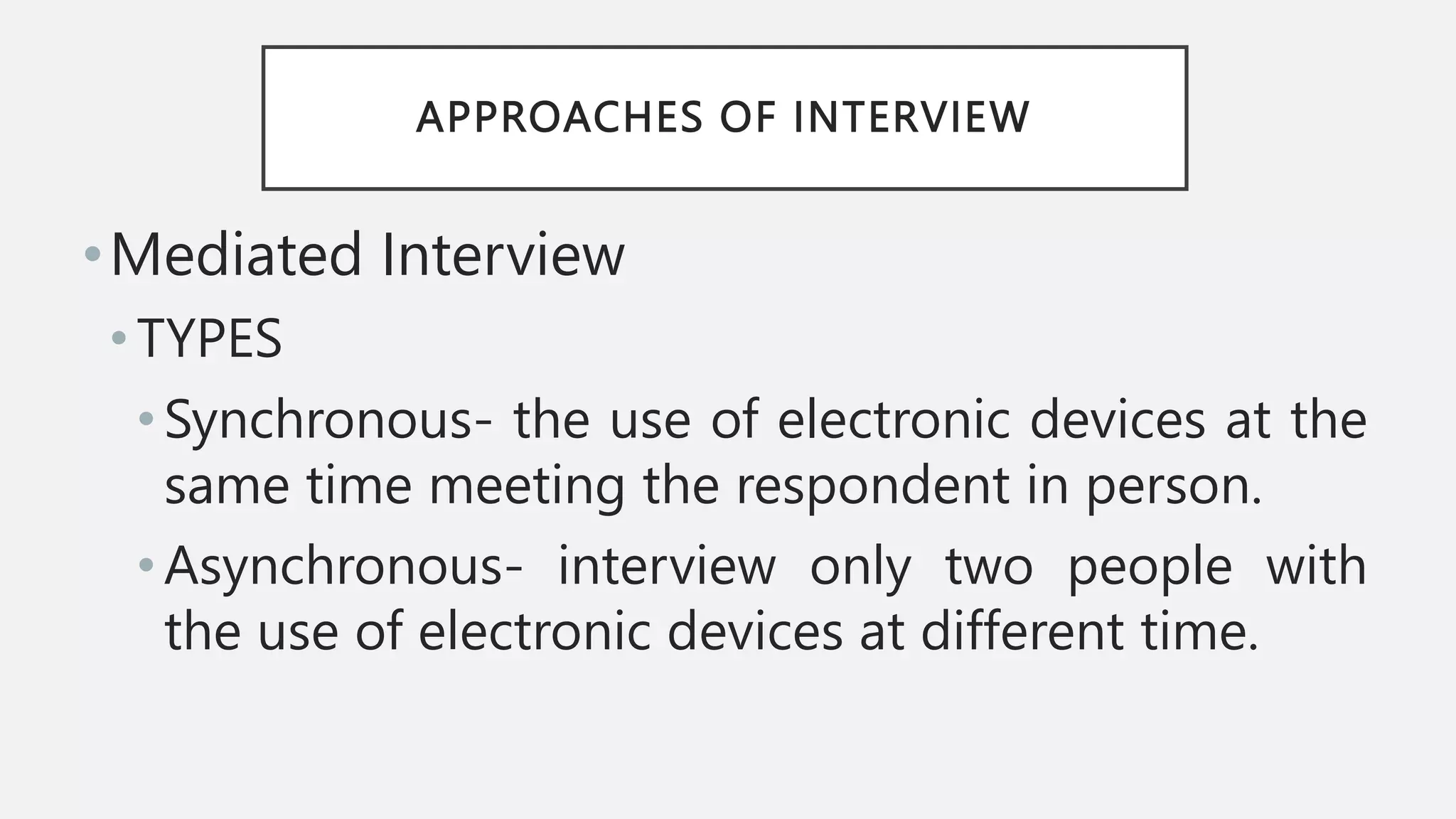The document discusses different types of interviews that can be used for data collection, including structured interviews, unstructured interviews, and semi-structured interviews. It also describes different approaches to conducting interviews, such as personal interviews, focus group interviews, and mediated interviews using technology. Finally, it outlines the typical steps involved in conducting an interview, including preparation, starting the interview, asking questions, and closing the interview.



















